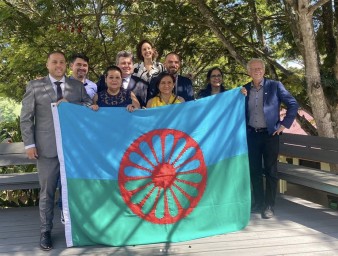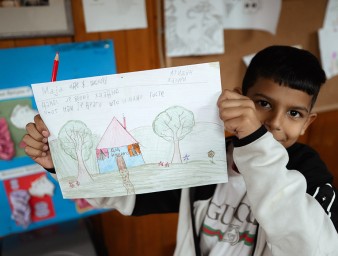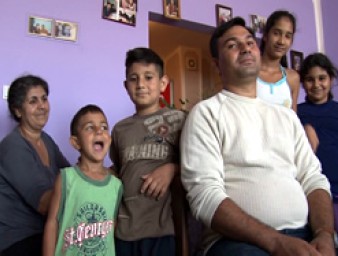Innovative grassroots projects for Roma integration in the Czech Republic
01 May 2013

In the Czech Republic, innovative projects are supporting the inclusion of the Roma population living in the industrial city of Ostrava, the second largest city in the Czech Republic and home of one of the largest Roma communities in Central Europe.
Some of the most innovative projects benefiting Roma in Ostrava were led by a non-governmental organization established by Sri Kumar Vishwanathan, a 49-year-old high school physics teacher from India who relocated to the Czech Republic, and eventually moved to a Roma community in Ostrava.
Initially, Kumar wanted to stay in the Roma community just a few weeks but those weeks turned into months and years. After witnessing first-hand how the authorities placed Roma families indefinitely in run-down containers normally used as temporary accommodation for construction workers, he felt compelled to intervene to defend the rights of the Roma while calming tensions and initiating efforts to build up trust between the different communities.
Projects led by the organization he founded, Vzájemné soužití (Living Together), have focused on building a whole new neighbourhood of modest but nice houses by and for the Roma as well as ethnic Czechs. “The project was widely derided as an unrealistic dream,” remembers Kumar, “but the Roma defied the sceptics and became actively involved in building their houses.” The project, known as the “Coexistence Village”, was inaugurated in 2002 and remains to this day an inspiring success story. Meanwhile, however, other projects to ensure access for Roma to adequate housing have been opposed by the local authorities.
In the education sector, Kumar’s organization advocated to prevent the segregation of Romani children who are being sent to special schools for pupils with intellectual disabilities. “It has been on an Ostrava case that the European Court of Human Rights has ruled against segregation of Romani children in special schools,” recalls Kumar, “but there have also been some of the most promising advances here.”
Kumar has also addressed the issue of usury inside the Roma community itself by empowering the victims, almost exclusively women, to speak up against such practices and overcome mutual mistrust between them and the police. A project to train Roma women to become police assistants contributed to improve inter-ethnic relations in Ostrava, recalls Kumar. Later, Kumar was also involved in a project to bring justice to Roma women who had undergone sterilization in the past without their full consent.
“Prompted by the UN Human Rights Office and Kumar’s organization, the city of Ostrava launched an ambitious Roma inclusion project in 2011, which received important funding from European Union’s Structural Funds,” says UN human rights officer Pablo Espiniella who facilitated a training on human rights-based approach to budget monitoring, analysis and advocacy in Ostrava.
Regrettably, even though Kumar received various awards for his work, his organization was evicted by the local authorities on 29 January 2013 from the office where it had been providing services to the most needy Roma for 14 years. There has been an outpouring of sympathy for the organization. Speaking on the Czech television, the Government Commissioner for Human Rights, Monika Šimůnková, expressed her gratitude for the social inclusion work achieved by Kumar’s organization, and hoped that it will continue its activities.
“Our office is following the developments in Ostrava very closely,” says Jan Jařab, Regional Representative for Europe of the UN High Commissioner for Human Rights. “It is welcome when local authorities want to invest EU funds in Roma inclusion, but it has to be done hand in hand with civil society actors, not in a top-down way.”
29 April 2013
VIEW THIS PAGE IN:



